Asphalt Emulsions Go Deep for Full-Depth Asphalt Recycling
BY Tom Kuennen
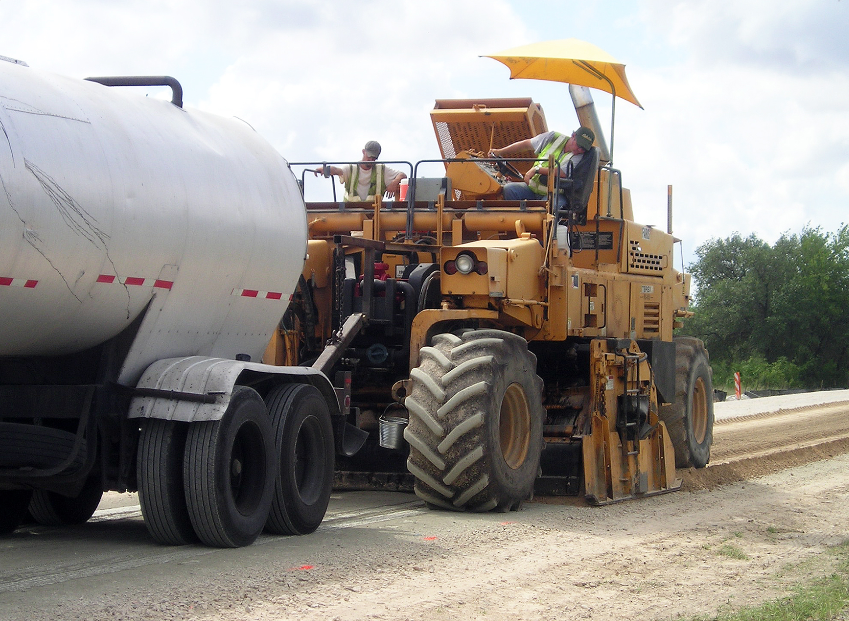
The No.1 theme in road construction is green technology. Government road agencies that specify in-place, full-depth recycling (FDR) take green to another level. While reuse of materials and fuel savings always have been benefits of in-place recycling, environmental attributes now include reduced carbon emissions, which are essential to reducing presumed global warming.
In the regions where FDR specialty contractors operate, the American Association of State Transportation Officials (AASHTO) has recognized such recycling as an environmentally sound road reconstruction application. The Federal Highway Administration (FHWA) encourages both hot and cold in-place recycling as it implements its environmental stewardship policies. In-place recycling is being encouraged in regions where air quality is an issue. For example, California’s wine country governments of the city of Napa and county of Sonoma recently teamed up to promote cold in-place recycling as a means to reduce carbon emissions.
FDR reclaims and treats an entire, failed driving surface, plus a planned depth of underlying materials, to produce a stabilized base course. This is contrasted with classic CIR, which being limited to the top 2 to 6 inches of pavement, does not treat the underlying materials.
With FDR, a driving surface is pulverized, mixed with additive or stabilizer, shaped or graded, and compacted. Next a crew places a thin surface or wearing course.
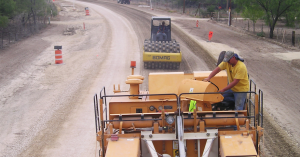
If you need to perform reconstruction of a failed subbase in a remote location far from an asphalt plant or aggregate source, in-place FDR using asphalt emulsions can offer cost savings. With in-place FDR, truck haul costs and the exhaust and dust from truck hauls are minimized, as most of the recycled mix consists of existing material. Demolition material disposal problems are avoided entirely, and tipping fees eliminated, while landfill capacity is conserved. Photo courtesy Ergon Asphalt & Emulsions Inc.
The technique involves the full pavement section and a predetermined portion of the underlying materials being uniformly crushed, pulverized and blended, resulting in a stabilized base course, which may be further stabilized by use of additives such as asphalt emulsion. Equipment includes mobile recyclers, crushers, stabilizers, motor graders, compactors, or a combination of these machines.
FDR can treat rutting in subsurface layers to improve roads lacking structural capacity. With asphalt emulsion-FDR, most pavement distresses can be cured, the costs of continuous truck hauls are minimized, significant structural improvements are made, material disposal is avoided, and ride quality is improved.
A variant of FDR is central plant cold mix recycling, which mixes material taken from the road with an asphalt emulsion at a central or mobile plant. New aggregate can also be added to improve overall performance. The resulting cold mix is typically used as a stabilized base course. For this, RAP is taken to the plant, and recycling mix is returned to the paving site.
“Full-depth reclamation is a cost-effective technique for correcting deficiencies, reclaiming distressed pavements and providing structurally sound bases for existing roads,” according to the Asphalt Emulsion Manufacturers Association (AEMA). “Structure is rebuilt down into the pavement during the process.”
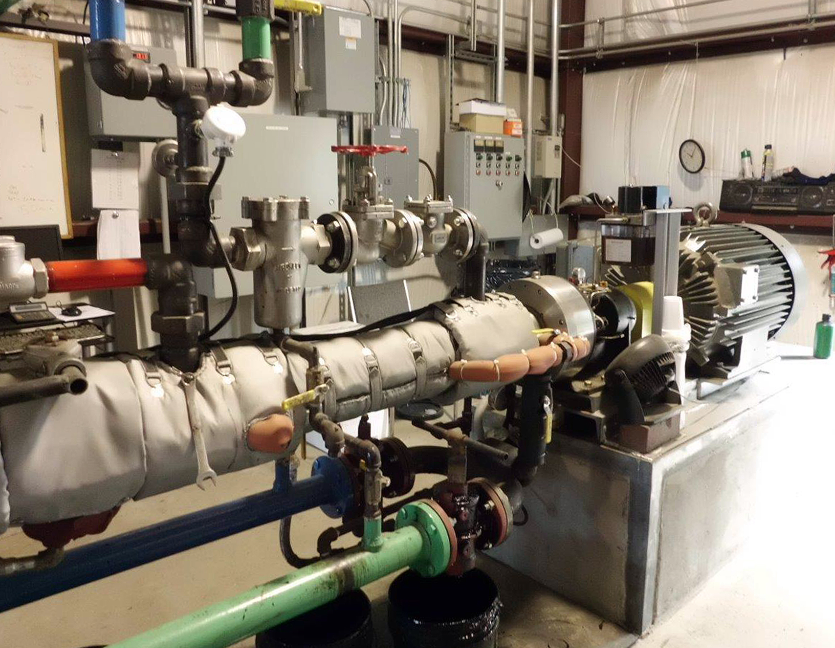
In a colloid mill, miniscule drops of liquid asphalt cement are diffused into water while being treated with a small quantity of emulsifying agent. Photo courtesy Russell Standard Corp.
Mix In an Emulsion
An asphalt emulsion for FDR is a homogeneous mixture of two insoluble substances—oil and water. In it, particles of liquid asphalt (the dispersed phase) are surrounded by molecules of water (the continuous phase). Asphalt emulsions are produced by dispersing tiny globules of asphalt cement (AC) into water treated with a small quantity of emulsifying agent. The dispersion takes place in a powerful blender, called a colloid mill, where spinning blades break or shear the liquid asphalt into suspended microscopic particles. The water, or soap solution, is immediately introduced to form the emulsion. These globules are either anionic (negatively charged) or cationic (positively charged).
The emulsifier—an engineered surfactant (detergent) or surface-active agent—maintains the microscopic asphalt droplets in a stable suspension, keeping them from recombining. The amount and type of surfactant used, along with other variables, controls properties of the emulsion that are critical to performance in the field application.
Generally speaking, an emulsion will be constituted of 57 to 70 percent typical range of asphalt binder content per ASTM specs, with the rest water and a very small amount of emulsifier, sometimes as low as one quarter of a percent by weight. The emulsifier also partially controls the “break” time following placement on a road, in which the water evaporates, leaving the residual asphalt behind.
Residual asphalt is the remaining asphalt after an emulsion has cured, typically 57 to 70 percent. The so-called “break” is the moment when water separates enough from the asphalt emulsion showing a color change from brown to black. The chemistry of asphalt emulsions enables the coating and adhesion of the residual AC to aggregate surfaces in both dense and open-graded mixes, base stabilization and stockpiled patching mixes.
Recycling agents for FDR are specified for field conditions and existing materials, which are obtained as cores and analyzed for their suitability for the right agent. The spotlight is on asphalt emulsions as the right agent for FDR stabilization, when appropriate for the end use. Thin, bituminous pavements past their lifecycle, in need of rehab, are prime candidates for FDR with asphalt emulsion. Depending on the severity of the base distress, base corrections may need to be made or base rock added, AEMA recommends.
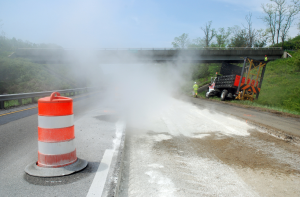
The use of hydrating lime, cement or fly ash chemical stabilization poses visibility hazards and airborne dry particulate emissions that asphalt emulsion-enabled FDR does not create. A chemical stabilizer, cement powder is spread on this pavement in advance of FDR, and you can clearly see the dry particulate emissions of reactive cement spreading into surrounding areas. FDR with asphalt emulsions precludes this problem. Photos courtesy Tom Kuennen.
AEMA maintains that lab testing of materials from the road will result—if indicated—in a tailored emulsion mix design. That design will be used as a reclaimer/stabilizer pulverizes the existing pavement and its base uniformly 4 to 10 inches deep, and mixes the asphalt emulsion in. The stabilized material is compacted with a padfoot compactor to work out the moisture. The road is then bladed to level the surface and compacted in preparation for a new surface.
“When asphalt emulsions are used [in FDR] projects, the emulsion needs time to break (set) and the water needs time to evaporate before placing the surface source,” according to National Cooperative Highway Research Program (NCHRP) Synthesis 421: Recycling and Reclamation of Asphalt Pavements Using In-Place Methods (2011). “During this curing time, the pavement needs to perform under traffic from seven to 30 days,” NCHRP 421 notes. “An appropriate selection of materials and additives can be used to minimize the time delay between recycling and placement of the surface course. Another consideration related to traffic level is the ability of the subgrade to support the weight of the pre-surface treatment traffic and recycling equipment.”
Among the emulsions used in FDR, NCHRP 421 lists the following as appropriate asphalt emulsions for FDR: CSS-1, CSS-1h and CSS-1hP; CMS-2S; HFMS-2 and HFMS-2S; HF-150; HF-300P; and proprietary solventless emulsions.
“Emulsions historically used in the same environmental conditions may have base asphalts with a wide range of performance-graded asphalt properties that will likely influence the success or failure of recycling projects,” NCHRP reports.
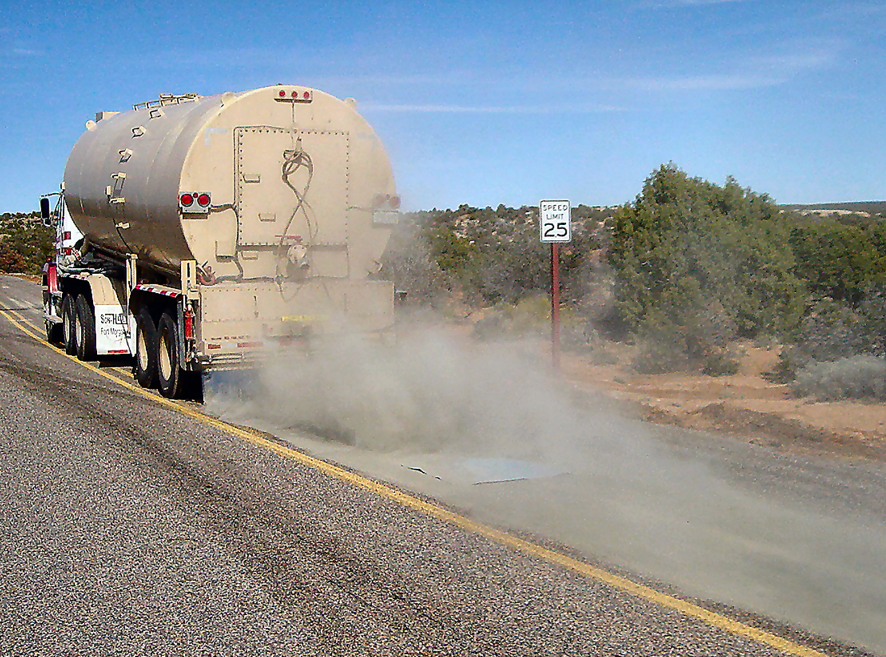 In addition to their environmental friendliness, asphalt emulsions boost cohesive strength of the recycled pavement material, as well as stabilizing the base. This means emulsions used in FDR have the ability to add structural value to a pavement, enhancing its load-bearing capacity. Asphalt emulsions are low in viscosity, and can be applied via an onboard liquid additive system in the recycling equipment, which can precisely meter the emulsion, providing more control over the quantity used than is possible for the distribution of dry, hazardous chemical agents such as lime, Portland cement or fly ash.
In addition to their environmental friendliness, asphalt emulsions boost cohesive strength of the recycled pavement material, as well as stabilizing the base. This means emulsions used in FDR have the ability to add structural value to a pavement, enhancing its load-bearing capacity. Asphalt emulsions are low in viscosity, and can be applied via an onboard liquid additive system in the recycling equipment, which can precisely meter the emulsion, providing more control over the quantity used than is possible for the distribution of dry, hazardous chemical agents such as lime, Portland cement or fly ash.
In southeastern Michigan, an engineered asphalt emulsion was used for in-place FDR on Monroe County Road 151. The failed concrete pavement was demolished, and in-place recycling of the existing base to a depth of 8 inches, followed with a 6-inch depth of minus 2-inch RAP, placed by an asphalt paver. This particular emulsion was designed by Asphalt Materials Inc., expressly for recycling work, and was much different than conventional emulsions used for surface treatments. The firm created the emulsion for use with the materials in the road base, obtained by coring.
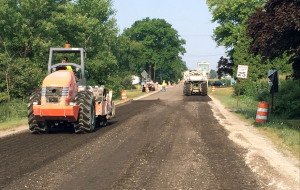
On Monroe County 151 in Michigan, the crew used an engineered asphalt emulsion for the FDR. A padfoot dirt roller—on the left—compacted the in-place recycled road base. Photo courtesy Asphalt Materials Inc.
A Wirtgen WR 2500 recycler injected the asphalt emulsion into its mixing chamber and mixed the RAP and base. The engineered emulsion provided prolonged mixing time, permitting the contractor time to grade, shape and begin compaction. Depending on the weather, he would have 60 to 90 minutes before it became difficult to move. Then, when mixing is done, the emulsion was designed to release the water from the pavement.
Following the creation of the stabilized base, the contractor created a crown in the base course with a motor grader in advance of a 3.5-inch virgin asphalt overlay, placed in two lifts, as the surface course.
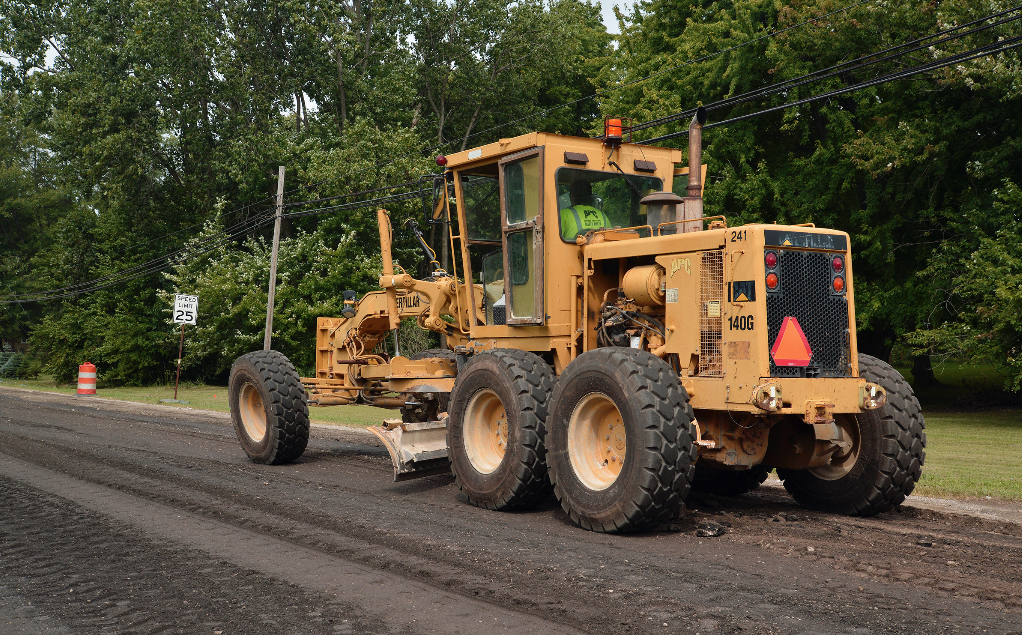
On Monroe County 151 in Michigan, the motor grader creates a crown on the newly stabilized subbase in advance of the asphalt surface course. Photo courtesy Asphalt Materials Inc.
